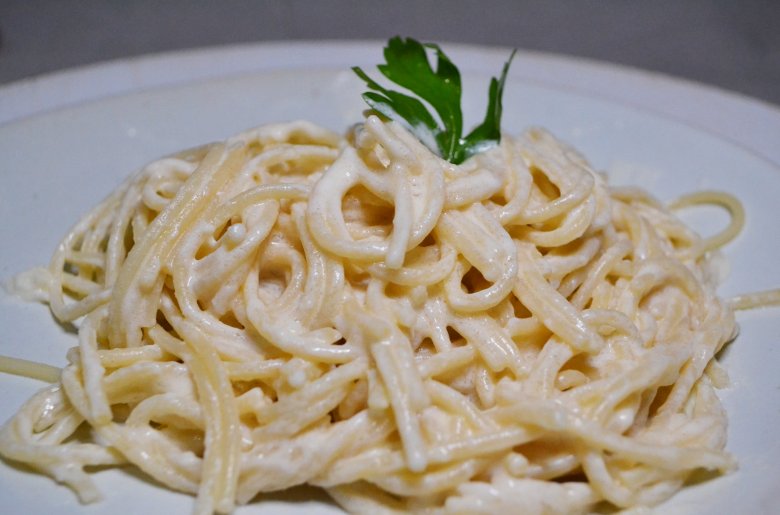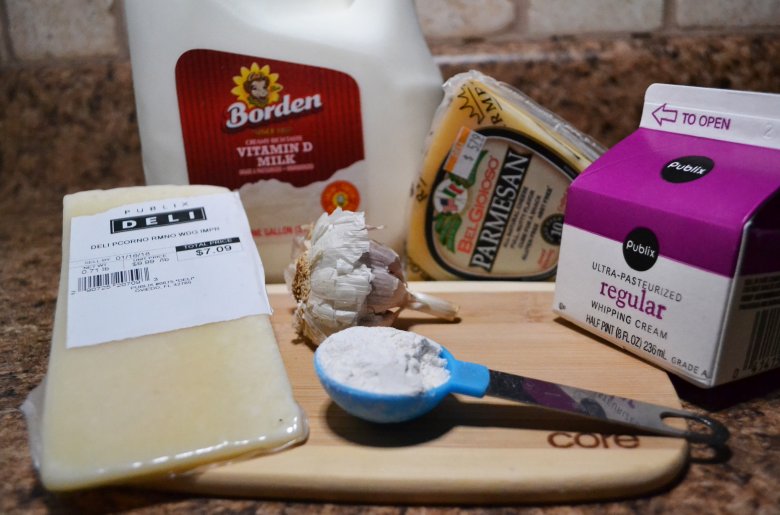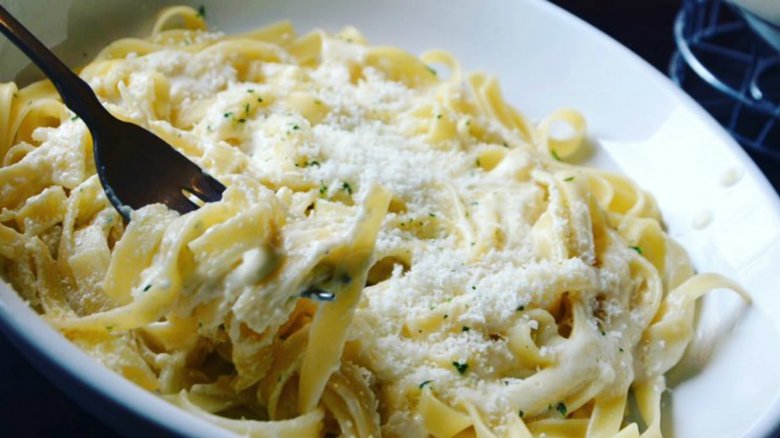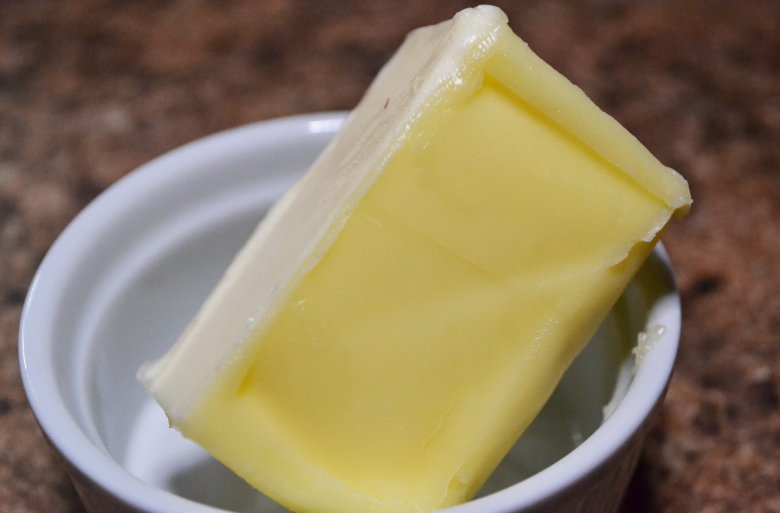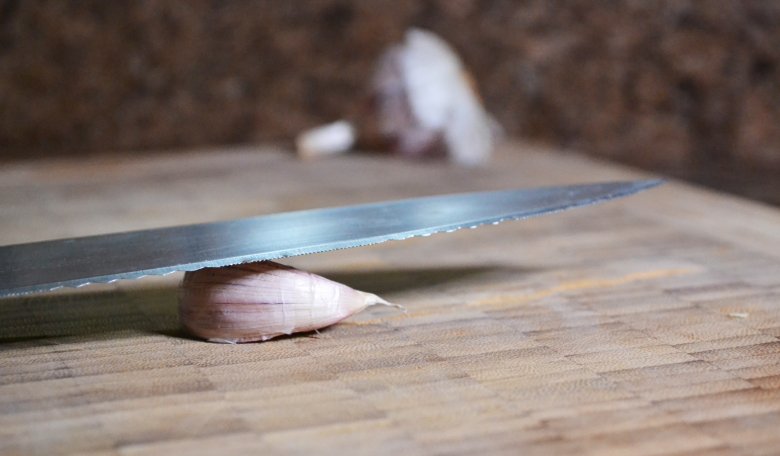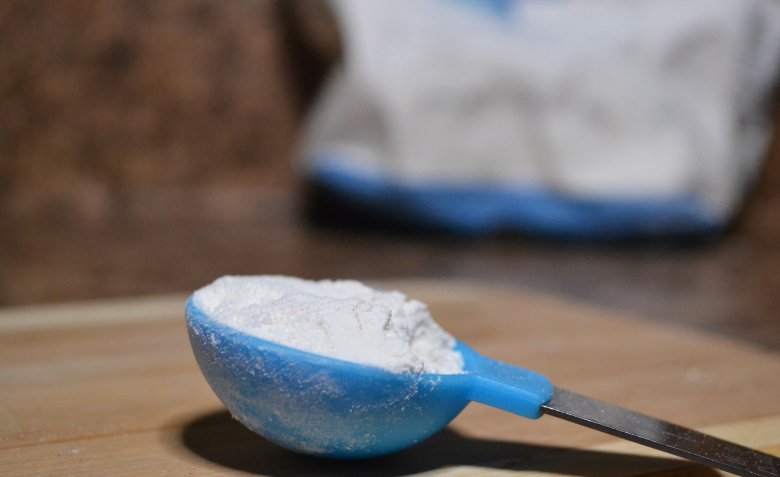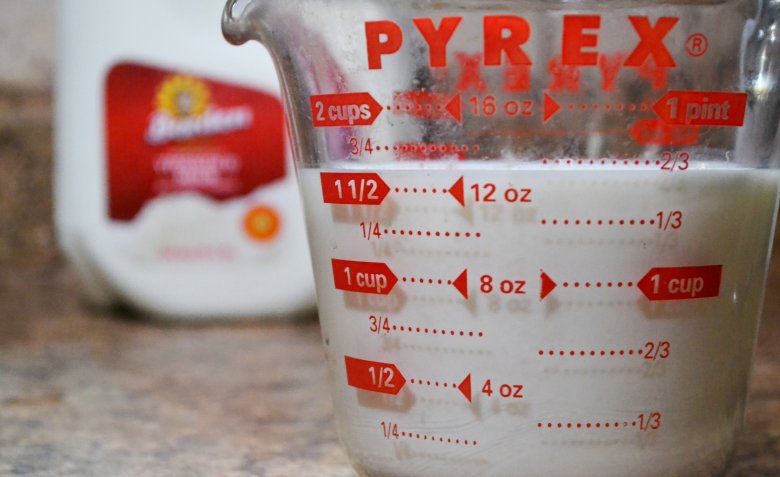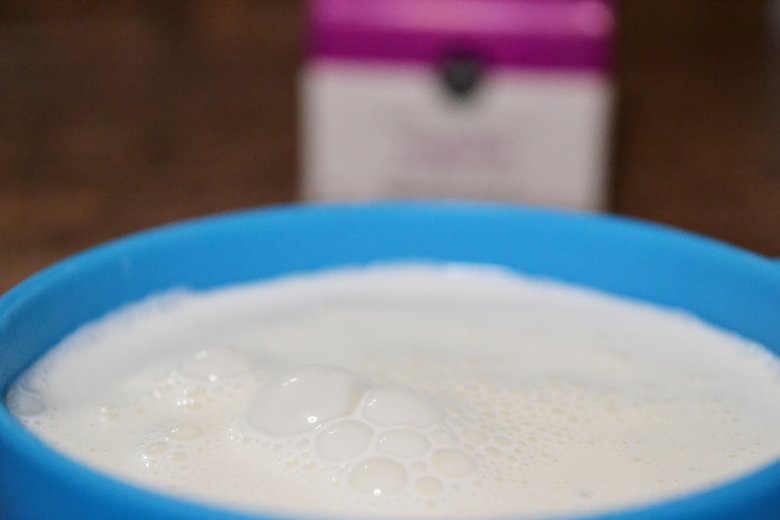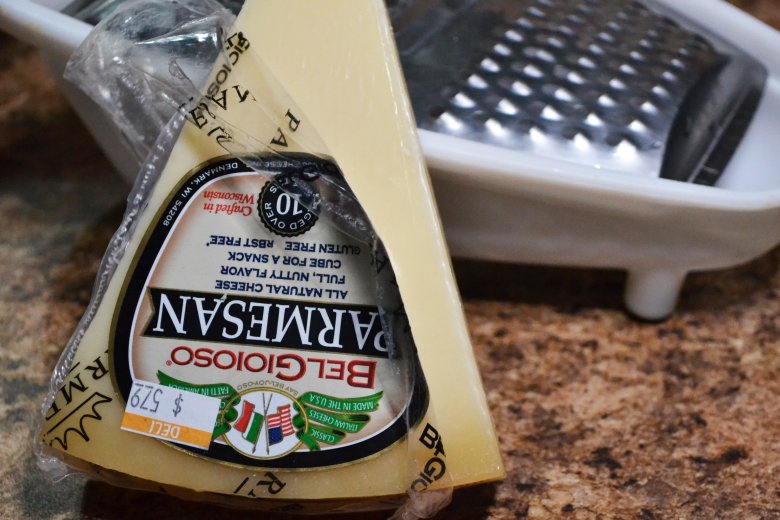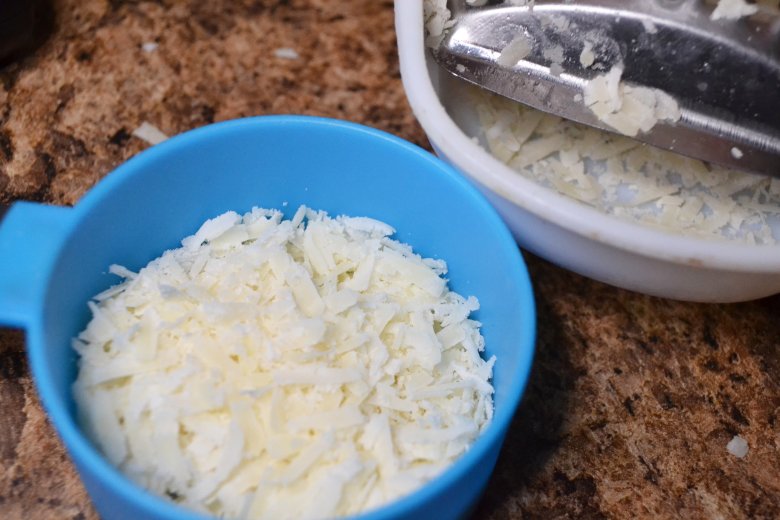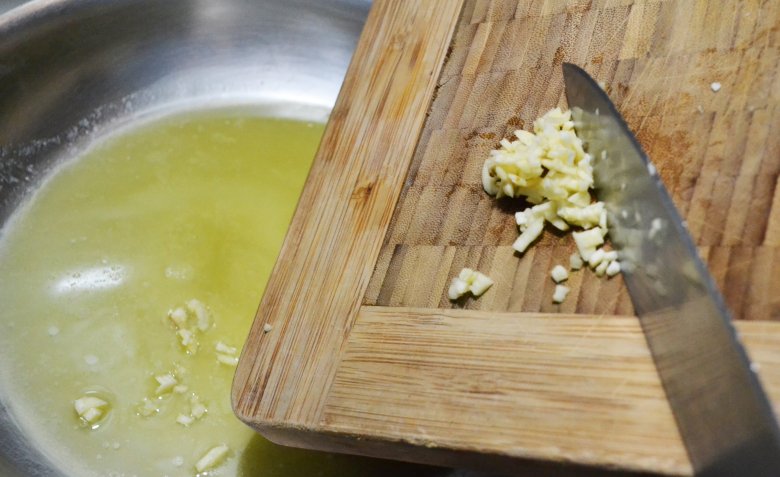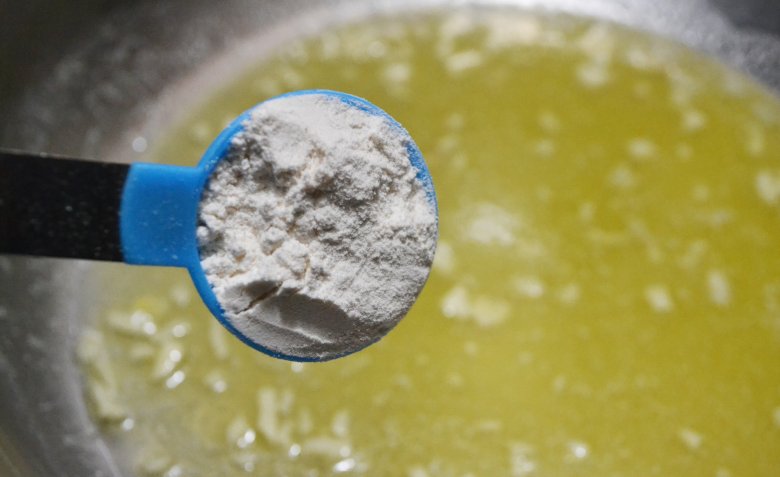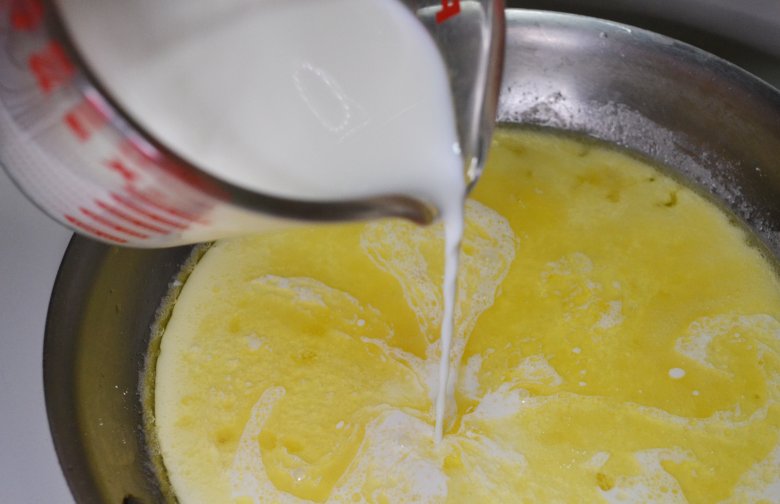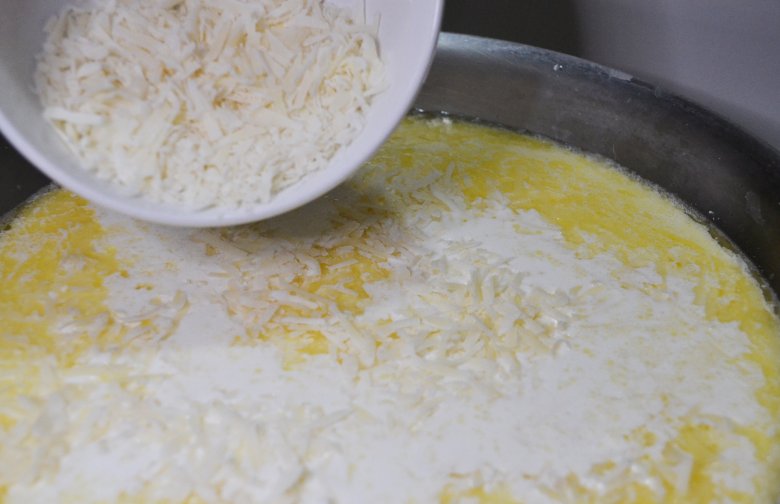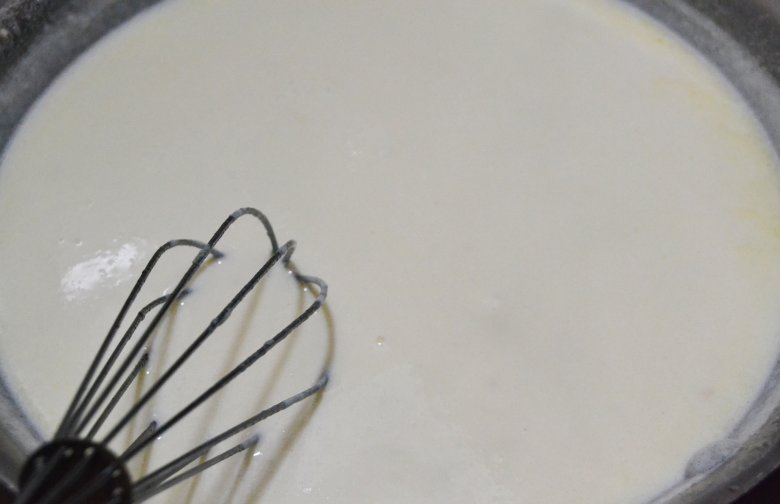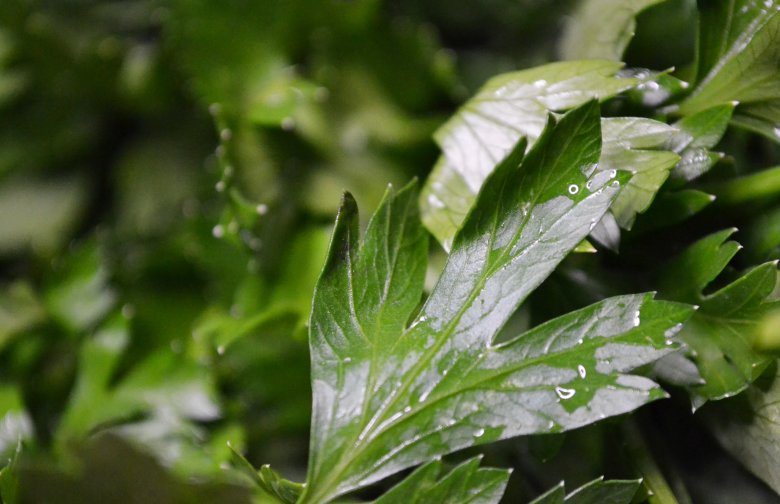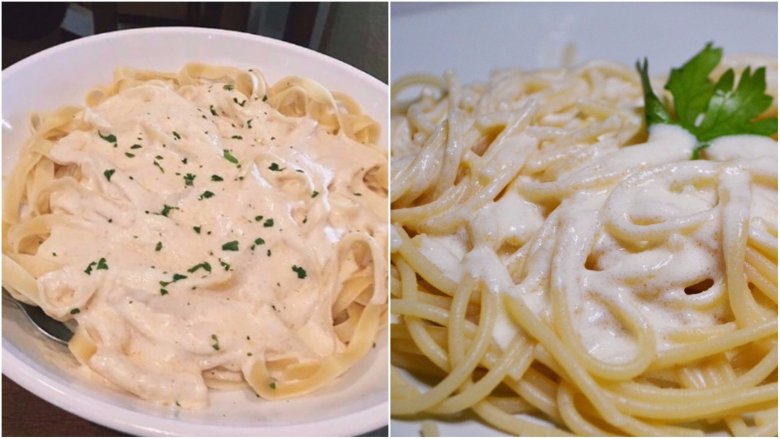Copycat Olive Garden Alfredo Sauce Recipe
It's fitting that white Alfredo sauce — an American invention — is one of the most popular dishes at the quintessential American Italian restaurant. Scoff all you want, but Olive Garden's Alfredo sauce is delicious and addictive. It's also incredibly easy to make — even though you might be trying a few cooking steps you haven't done before. Olive Garden's Alfredo sauce is a great beginners course into the wonderful world of pan sauces, and one you can undoubtedly create at home.
Gather your ingredients
Here's what you need to make your own Olive Garden Alfredo sauce: Butter, garlic, flour, milk, heavy cream, Parmesan cheese, and Romano cheese. And that's it! The full ingredients list is at the end of this article, along with a step-by-step recipe.
What are we getting into?
So, what's the deal with Olive Garden's Alfredo? The flavor is more garlic and butter than cream — but that's not exactly a bad thing. It's a bit thicker than you think, and sticks well to pasta. It's really the butter that gives it the savory taste, but there are actually a lot of flavors going on — which is why the idea of the Alfredo seems complicated when it's actually not.
You need a lot of butter
As I mentioned before, a traditional Italian Alfredo is nothing like what we know and love today. The original Italian Alfredo was simply butter and Parmesan — and you'd end up with a nutty, buttery, and not especially thick sauce. Butter still plays heavily into the American Alfredo, so we'll need 3 ounces of butter. As I often suggest, feel free to useunsalted butter, because the end dish will have a ton of salt in it from all the cheese anyway.
We're using the real garlic
Powdered garlic is more of a flavor enhancer, but fresh garlic brings the flavor — which is why we're using it here. We'll need about a tablespoon of garlic, which is roughly one garlic clove.
If you don't know the magic trick to getting garlic peeled easily, here's the gist. As pictured above, lay a large flat knife on the garlic clove and press down firmly on the side of the blade to "crush" the garlic — only you're not literally crushing the garlic, but simply putting enough force to crack the skin. After that, it will peel right off, and from there you can finely mince the garlic.
If you're tempted to just buy some pre-minced garlic, don't. Why? Well, there are a plethora of reasons, but the main ones we'll focus on is the brine will sap away a lot of the garlic flavor. Plus, it's a lot cheaper to buy a clove and do it yourself.
You'll need a thickener
In order to make any sauce, you need to thicken it up. The easiest way is to add flour to a fat. We'll need two tablespoons of flour — the basic formula is equal parts flour and fat, but this recipe has a little more fat in the form of butter, for flavor. The end dish needs to maintain some butter flavor, so it'll be fine.
If you have a gluten issue, or just want to keep your gluten count down a bit, feel free to substitute gluten-free flour in here; it'll work just fine.
Skip the skim
Alfredo sauce is white. Milk is white. Seems like a no-brainer. This is the base — the dairy and the coloring comes from our good friend the cow. We'll need 1 ½ cups. Use whole milk, none of that skim stuff.
Add the cream
The heavy cream will bring a bit more volume than good old milk. There are subtle differences between heavy cream and heavy whipping cream — the latter is much easier to find at your local grocery store. The reality is that regardless of the word "whipping," they both contain enough air to make the white stuff thicker, and that's what we want for the final Alfredo sauce — volume. We'll need 1 ½ cups of heavy cream.
Don't cheap out on the cheese
Parmesan is a well-known cheese, and it's especially common in Italian dishes. It brings a nutty flavor to a dish, and despite being a hard cheese, is easily shredded. You'll need a half cup of Parmesan, freshly grated. Don't buy that dry stuff in a glass jar — get a triangle of cheese.
Romano cheese
If you don't understand Italian, you don't get the origin of pecorino Romano cheese. It's the "pecorino" that gives it away: Italian for "sheep." Romano is a salty, silky cheese that really goes well with sauces and balances nicely with Parmesan. You can find it at your local grocery store — it will likely be in the specialty cheese section. We need a half cup of Romano as well.
Start the sauté
It's time to cook the garlic. Place your three ounces of butter in a good-sized pan and set the heat to medium, or about 350 degrees. Wait for the butter to melt completely, and then add the finely chopped garlic and sauté.
Don't bother setting a timer, just use your nose and stand there. Once the garlic has become fragrant, it's ready. That's a fancy way of saying, 'When you smell it, it's done." It could take 45 seconds, it could take two minutes, just stand there and stare at it.
Roux time
A roux is a common cooking step that rarely gets explained. In simple terms, the idea behind the roux is to thicken a sauce with equal parts flour and fat (in our case, butter). The way we're using the roux will not change the taste of the dish, however there are ways to bring some flavor in a roux; basically the darker it is the more intense the flavor is. But we've got plenty of flavor in this dish so we will do a basic roux.
Add two tablespoons of flour to the garlic butter and stir it around with a whisk. You want to bring it together, but we don't need it to be a full on lump of soft clay. Let it cook for about a minute — we don't need to worry about cooking the flour taste out because there's enough butter here to smother it — and now we're ready to get something in there that will thicken.
The wet stuff
The order doesn't matter, but we need to get both dairy products into the pan. Add 1 ½ cups each of milk and heavy cream, and give them a stir.
Get cheesy
Next add the cheeses. Add the Parmesan and Romano, then break out a whisk and give that cheese a nice twirl or 30. Just keep working the cheese until it starts to break down — it doesn't have to be completely gone but let's at least help it get where it needs to be.
Okay... now what?
If Olive Garden is to be believed, you simply take the pan off the heat and let it coast. I find that step dubious at best, and perhaps a bit misleading. Sure, you can do that if you have all the time in the world to let that Alfredo come together, but for the rest of us we need this thing to get hot — which will get it to its thickest point. So leave the heat at medium-high, and let it just come to a boil. The second you start to see some bubble action, kill the heat and remove the pan from the burner. Keep giving it a few stirs and you'll see in a few minutes it'll be nice and thick.
A little garnish
Why do we put parsley on our dishes? Is it so they look pretty? Originally, the leaf was a palate cleanser after a meal. Today, it's that thing you pluck out of the middle of your food and put it as far away from your eating area as possible. So can you eat it? You bet you can. Parsley goes great with pasta, so instead of tossing it off to the side, take that parsley and eat it. Olive Garden actually cuts up their parsley so it looks nice and pretty on the plate — that contrast of green on white. I kinda like the traditional way of just sticking a leaf in the middle. You can eat it either way.
How close are we?
There are three flavors you pick up immediately; the nutty flavor of the Parmesan cheese, the garlic, and the butter. And remarkably, this tastes just like Olive Garden's Alfredo. If you look at the images, besides the obvious difference in pasta (I went with gluten-free spaghetti), the sauce looks the same. Olive Garden really piled it on in that photo — I was a bit more delicate with the portion.
You can add salt and pepper to taste, but you don't need any salt at all. This thing is already clocking in at somewhere close to 25 percent of your daily recommended allowance of sodium — give or take a bit — and adding salt will make this Dead Sea-like in salinity.
If you can make this Alfredo sauce you can make any sauce out there. They all need a roux, they all add liquid, and they all thicken. Just swap out the milk for Marsala and you've got a great steak sauce. White wine and it's excellent on chicken. All the steps are right there, now go make a sauce or two!
Directions
Olive Garden's Alfredo sauce is a great beginners course into the wonderful world of pan sauces, and one you can undoubtedly create at home.
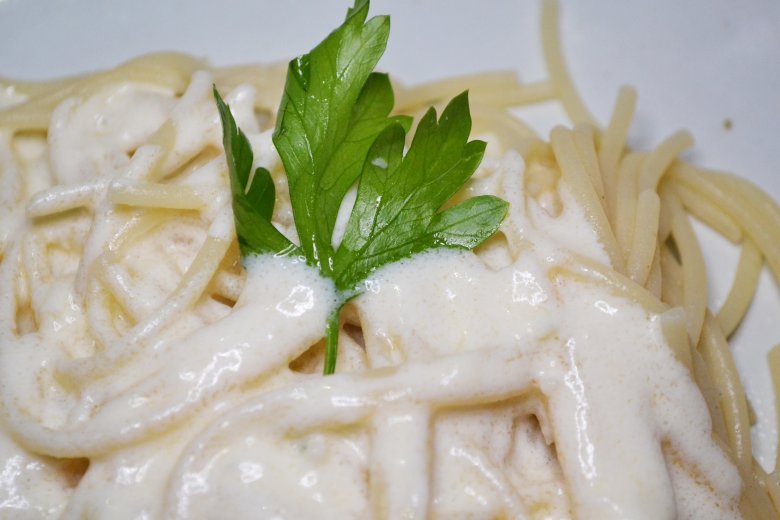
Ingredients
- 3 ounces butter
- 1 tablespoon minced garlic
- 2 tablespoons flour
- 1 ½ cup milk
- 1 ½ cup heavy cream
- ½ cup Parmesan cheese grated
- ½ cup Romano cheese grated
Directions
- Put butter in a pan and set to medium heat, or 350 degrees. Melt butter completely.
- Add garlic to melted butter and sauté for 30 seconds to 2 minutes, until the garlic becomes fragrant.
- Add flour and whisk to make a roux.
- Add milk and cream and stir.
- Add cheeses and stir until it begins to melt.
- Continue stirring with a whisk over the heat until it just begins to hit a boil.
- Remove from heat, and stir a few more times until sauce thickens.
- Serve with your favorite pasta and a parsley garnish, and enjoy!
Nutrition
| Calories per Serving | 670 |
| Total Fat | 62.5 g |
| Saturated Fat | 39.1 g |
| Trans Fat | 0.7 g |
| Cholesterol | 206.9 mg |
| Total Carbohydrates | 11.8 g |
| Dietary Fiber | 0.2 g |
| Total Sugars | 7.4 g |
| Sodium | 568.3 mg |
| Protein | 17.3 g |
